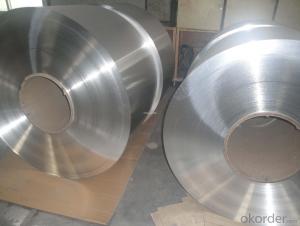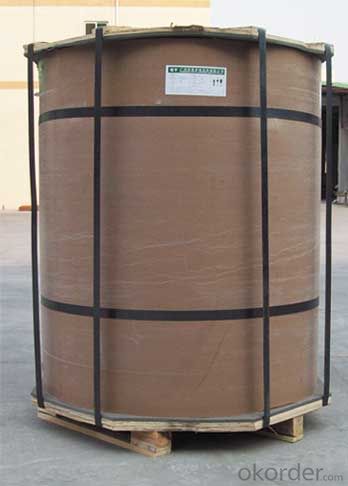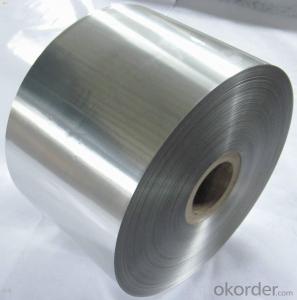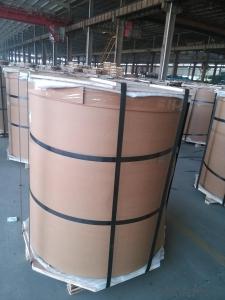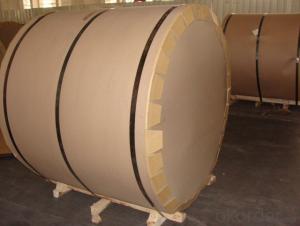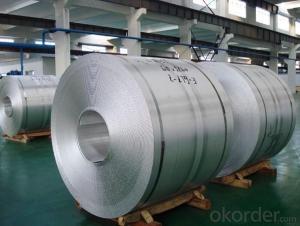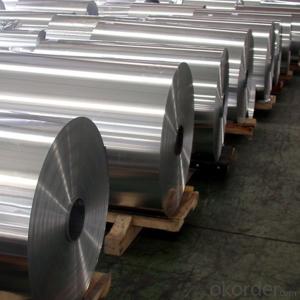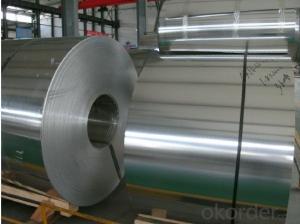Aluminum Coils Inc Tampa - D.C AA3005 Aluminum Coils Used as Building Material
- Loading Port:
- Shanghai
- Payment Terms:
- TT OR LC
- Min Order Qty:
- 5 m.t.
- Supply Capability:
- 10000 m.t./month
OKorder Service Pledge
OKorder Financial Service
You Might Also Like
Specification
1.Structure of D.C AA3005 Aluminum Coils used as Building Material Description
D.C AA3005 Aluminum Coils used as Building Material widly used in decoration field. For the painting, it depends on the using evironment. If you use in the open air, we recommend the PVDF coated aluminium coils. This kind of painting can last 15-20 years. If you use in the room, we recommend PE coated aluminium coils. The price is much more competitive.
Direct Continuous Aluminium Foil Stock in Coil is one semi-finished aluminium material. This strip can be rolled down to aluminium foil.The final thickess can be 5-20 microns. Aluminium foil is soft, ductile and with a silver-white luster which can be widely used in a large scare of fields.
2.Main Features of D.C AA3005 Aluminum Coils used as Building Material
a.Competitive price---We have our own mills and can produce mill finished aluminium coils, so we can control the production cost better.
b.Professional after-sale service---We have more than 15 years exportation experience and you need not worry about the exporation problems.
c.Fast delivery time---We can control the delivery time within 35 days.
3.D.C AA3005 Aluminum Coils used as Building Material Images
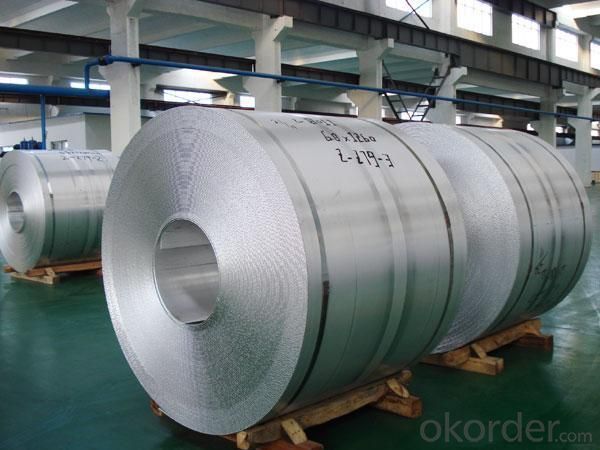
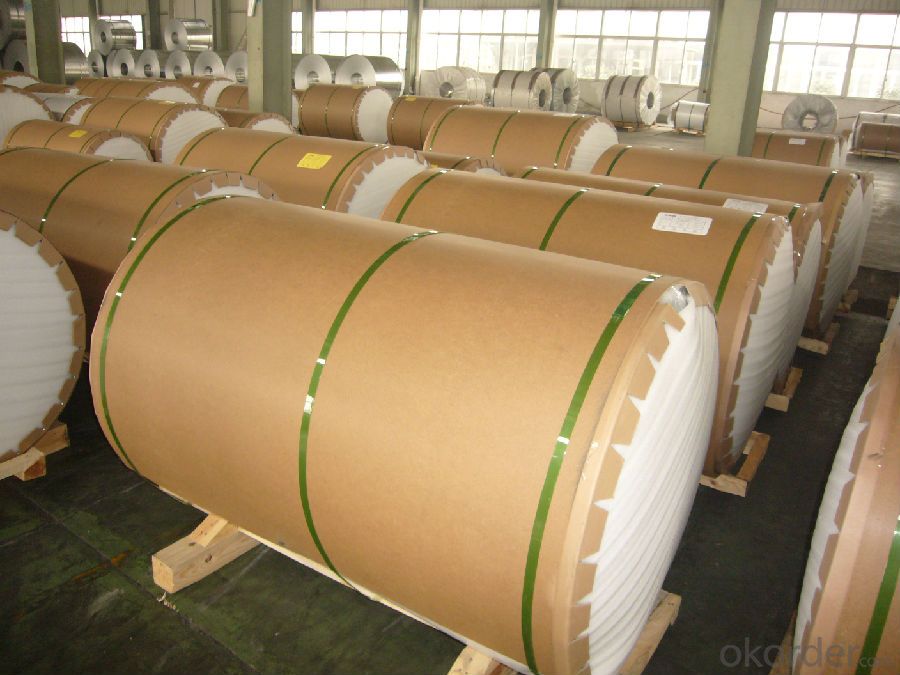
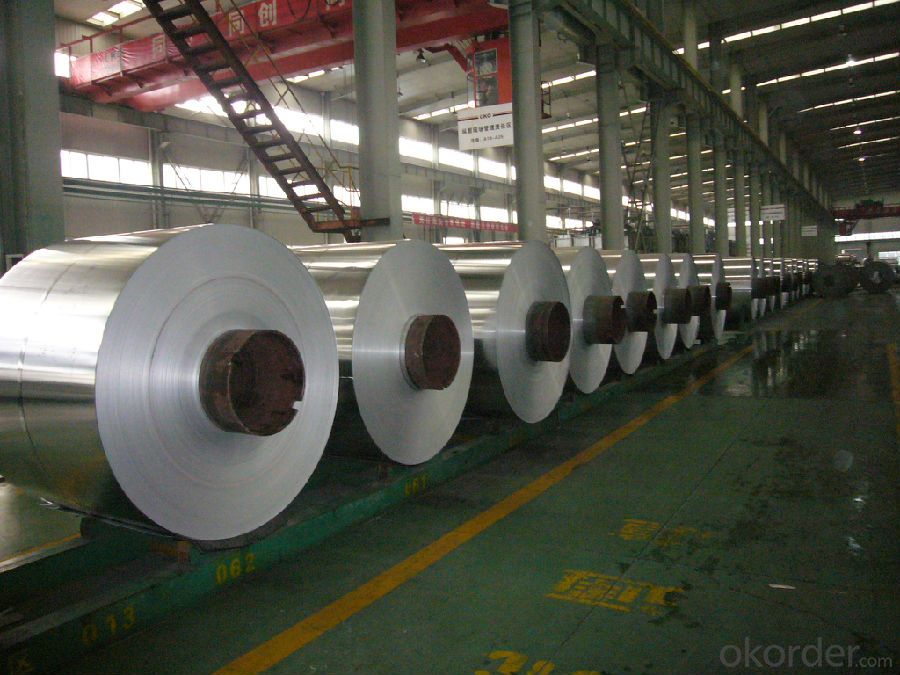
4.D.C AA3005 Aluminum Coils used as Building Material Specification
Alloy | AA3005 |
Temper | H14, H16, H18, H22, H24, H26, H32, O/F |
Thickness | 0.2mm -- 100mm |
Width | 30mm -- 1700mm |
Standard | GB/T 3880-2006,EN |
5. FAQ of D.C AA3005 Aluminum Coils used as Building Material
A.How to guarantee the quality?
Customers are welcome to our mill to visit and check the products. Besides, we can arrange a third party to test D.C AA3005 Aluminum Coils used as Building Material.
B.When will you deliver the products?
D.C AA3005 Aluminum Coils used as Building Material will be delivered within 35 days after receiving advanced payment or original L/C.
- Q: Are there any restrictions on the coil thickness of aluminum coils?
- Aluminum coils usually have restrictions on their thickness. The specific restrictions vary depending on the intended use and industry standards. Generally, the thickness of aluminum coils is limited by the capabilities of the manufacturing equipment and the desired end product. Applications that require flexibility, such as foils or flexible packaging materials, often prefer thinner coils. Conversely, industries like construction or automotive, where strength and durability are crucial, commonly use thicker coils. Availability and cost of raw materials may also limit the thickness of aluminum coils. Manufacturers must adhere to these restrictions to guarantee the quality and performance of the final product.
- Q: What certifications might be necessary for the production, sale, or use of aluminum coils?
- <p>Aluminum coils may require various certifications depending on their intended use and the standards set by different countries or industries. Common certifications include ISO 9001 for quality management systems, ISO 14001 for environmental management, and specific industry standards such as ASTM or EN standards for material properties and safety. For construction or automotive applications, additional certifications like CE marking in Europe or DOT certification in the US may be necessary. It's crucial to consult with industry standards and regulatory bodies to determine the exact certifications required for a specific application.</p>
- Q: What’s the loss rate per kg when processing aluminum coil to aluminum sheet?
- 6.5kg/piece
- Q: What kind of sensor is appropriate for aluminum coil thickness measurement?
- Optical sensor.
- Q: Can aluminum coils be used in the production of air conditioning systems?
- Yes, aluminum coils can be used in the production of air conditioning systems. Aluminum coils are widely used in air conditioning systems because of their excellent heat transfer properties and corrosion resistance. They are lightweight, durable, and highly efficient in transferring heat between the refrigerant and the air. Additionally, aluminum coils are more environmentally friendly compared to traditional copper coils as they require less energy during manufacturing and are fully recyclable. Overall, aluminum coils are a popular choice for air conditioning systems due to their performance, durability, and eco-friendliness.
- Q: Can aluminum coils be embossed or textured?
- Yes, aluminum coils can be embossed or textured. This process involves creating patterns or designs on the surface of the aluminum coils using specialized equipment and techniques.
- Q: Can aluminum coils be used in outdoor applications?
- Yes, aluminum coils can be used in outdoor applications. Aluminum is highly resistant to corrosion, making it a suitable material for outdoor use. It is commonly used in the construction industry for outdoor structures such as roofs, gutters, and siding. Additionally, aluminum coils are lightweight and easy to work with, making them a popular choice for outdoor applications. However, it is important to note that the specific grade and thickness of the aluminum coil should be considered to ensure it can withstand the environmental conditions of the specific outdoor application.
- Q: Some properties of aluminum are summarized in the following list.normal melting point 658°C heat of fusion 3.95 kJ/g normal boiling point 2467°C heat of vaporization 10.52 kJ/g specific heat of the solid 0.902 J/g°C Calculate the quantity of energy required to heat 1.58 mol of aluminum from 33°C to its normal melting point? In KJCalculate the quantity of energy required to melt 1.02 mol of aluminum at 658°C? In KJCalculate the amount of energy required to vaporize 1.02 mol of aluminum at 2467°C? In KJ
- Calculate the quantity of energy required to heat 1.58 mol of aluminum from 33°C to its normal melting point in KJ- 1.58 mol x 26.98 g/mol x 0.902 J/g°C x (658 - 33)°C x 1 kJ/1000 J = 24.03 kJ Calculate the quantity of energy required to melt 1.02 mol of aluminum at 658°C In KJ- 1.02 mol x 26.98 g/mol x 3.95 kJ/g = 108.7 kJ Calculate the amount of energy required to vaporize 1.02 mol of aluminum at 2467°C In KJ- 1.02 mol x 26.98 g/mol x 10.52 kJ/g = 289.5 kJ
- Q: An aluminum bar 3.80 m long has a rectangular cross section 1.00 cm by 5.00 cm, what is the resistance and what is the length of a copper wire 1.50 mm in diameter having the same resistance?
- Resistance equals resistivity times length divided by cross-sectional area. R = ρ?l/A The resistivities at 20°C are aluminum ρ = 2.82×10??Ωm copper ρ = 1.72×10??Ωm So the aluminum bar with rectangular cross section has a resistance of R = ρ?l/(a?b) = 2.82×10??Ωm ? 3.8m / (0.01m ? 0.05m) = 2.1432×10??Ω The resistance of copper wire with circular cross section is given by R = ρ?l/(π?d?/4) = 4?ρ?l/(π?d?) Hence a wire of same resistance as the aluminum bar has a length of l = R?π?d? / (4?ρ) = 2.1432×10??Ω ? π ? (0.0015m)? / (4?1.72×10??Ωm) = 0.0220m = 2.2cm
- Q: The user is asking if it's safe to use aluminum coil for food preparation in a microwave oven.
- <p>No, you should not use aluminum coil for food preparation in a microwave oven. Aluminum is a metal and can cause sparks or even a fire when exposed to the microwave's electromagnetic field. It can also reflect microwaves, potentially damaging the oven. Always use microwave-safe materials such as glass, ceramic, or microwave-safe plastic containers for food preparation in a microwave.</p>
Send your message to us
Aluminum Coils Inc Tampa - D.C AA3005 Aluminum Coils Used as Building Material
- Loading Port:
- Shanghai
- Payment Terms:
- TT OR LC
- Min Order Qty:
- 5 m.t.
- Supply Capability:
- 10000 m.t./month
OKorder Service Pledge
OKorder Financial Service
Similar products
Hot products
Hot Searches
Related keywords
